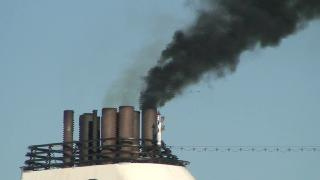California Air Resources Board Advisory 2017
In December 2007, the Air Resources Board (ARB) approved the “Airborne Toxic Control Measure for Auxiliary Diesel Engines Operated on Ocean-Going Vessels At-Berth in a California Port” Regulation, commonly referred to as the “At-Berth Regulation” (ABR).
The purpose of the ABR is to reduce diesel particulate matter (PM) and nitrogen oxide (NOx) emissions generated from the operation of ships diesel auxiliary engines.
 The ABR applies to container and refrigerated cargo ship fleets whose vessels cumulatively make twenty-five or more visits annually and passenger-ship fleets whose vessels cumulatively make five or more visits annually to the ports of Los Angeles, Long Beach, Oakland, San Diego, San Francisco and Hueneme.
The ABR applies to container and refrigerated cargo ship fleets whose vessels cumulatively make twenty-five or more visits annually and passenger-ship fleets whose vessels cumulatively make five or more visits annually to the ports of Los Angeles, Long Beach, Oakland, San Diego, San Francisco and Hueneme.
The ABR enables visiting vessels two possible options to reduce at-berth emissions from auxiliary diesel engines, these are:
1. Reduced on-board power generation option: Turn off auxiliary engines and connect the vessel to some other source of power, most likely land/grid-based shore-power.
2. Equivalent emission reduction option: Use alternative control technology that achieves equivalent emission reductions.
However, the ARB understands that certain scenarios may exist where vessels cannot fully comply with the ABR and provide six examples where a degree of flexibility may be granted on a case by case basis, these are:
1. The vessel visiting the port is equipped to receive shore power, but the terminal’s shore power berth is not able to provide shore power.
2. A vessel makes a commissioning visit to a terminal, and during the visit, the auxiliary engines operate longer than three hours.
3. A vessel uses shore power, but fails to meet the three/five-hour time limit for connecting or disconnecting shore power.
4. Vessels are using an approved alternative control technology to comply with the At-Berth Regulation.
5. Fleet participates in testing an alternative control technology with an ARB-approved test plan.
6. A fleet meets the percent reduction requirements for visits, power, or emissions, averaged on an annual basis.
Full details of the ABR entitled “Airborne Toxic Control Measure for Auxiliary Diesel Engines Operated on Ocean-Going Vessels At-Berth in a California Port” regulation can be found by clicking here.
The advisory requires fleets complying under the reduced on-board power generation option to satisfy the following two criteria from 1 January 2017:
1. Visits: At least 70 percent of a fleet’s visits to a port must satisfy the following limit on engine operation: for each visit, the auxiliary engines on the vessel cannot operate for more than three hours during the entire time the vessel is at-berth (e.g., a shore power visit).
2. Power Reductions: The fleet’s total on-board auxiliary engine power generation must be reduced by at least 70 percent from the fleet’s baseline power generation.
Fleets that comply under the Equivalent Emission Reduction Option pathway must reduce NOx and PM by 70% or more through use of an ARB-approved technology.
Full details of the ABR Advisory 2017 can be found by clicking here. The limits and requirements set out in this advisory supersede previous advisories dated December 2013 and March 2015.
If you would like advice on anything contained in this article, contact the loss prevention department at North.

 , you have now set your site language to English. If you'd like to change your language preference again, simply click on one of the other flags.
, you have now set your site language to English. If you'd like to change your language preference again, simply click on one of the other flags. を選択して頂くと、言語設定が日本語に切り替わります。設定変更後は以下の機能が利用可能です。
を選択して頂くと、言語設定が日本語に切り替わります。設定変更後は以下の機能が利用可能です。
 ,可将网站语言设置为中文。这能帮助您:
,可将网站语言设置为中文。这能帮助您:

